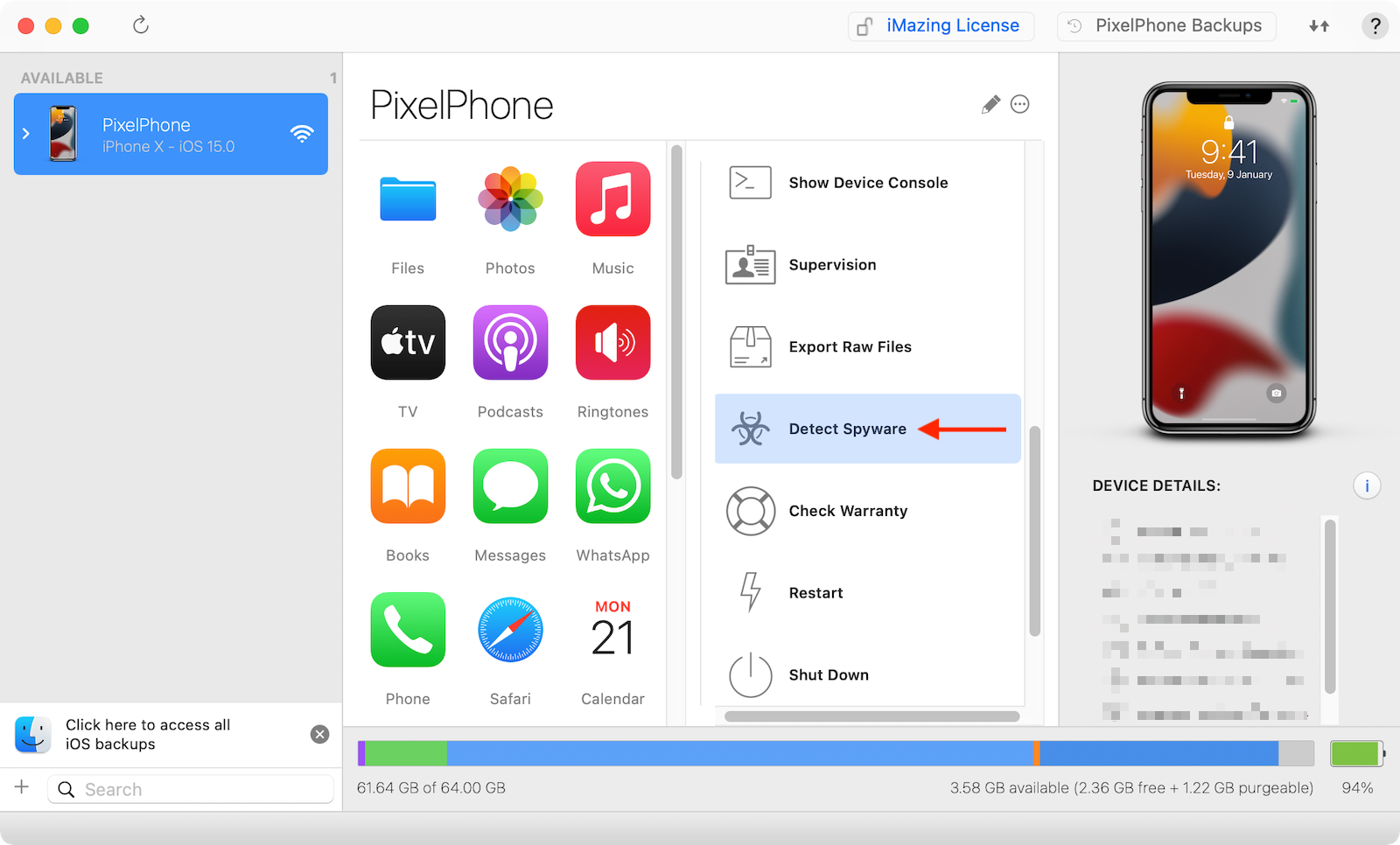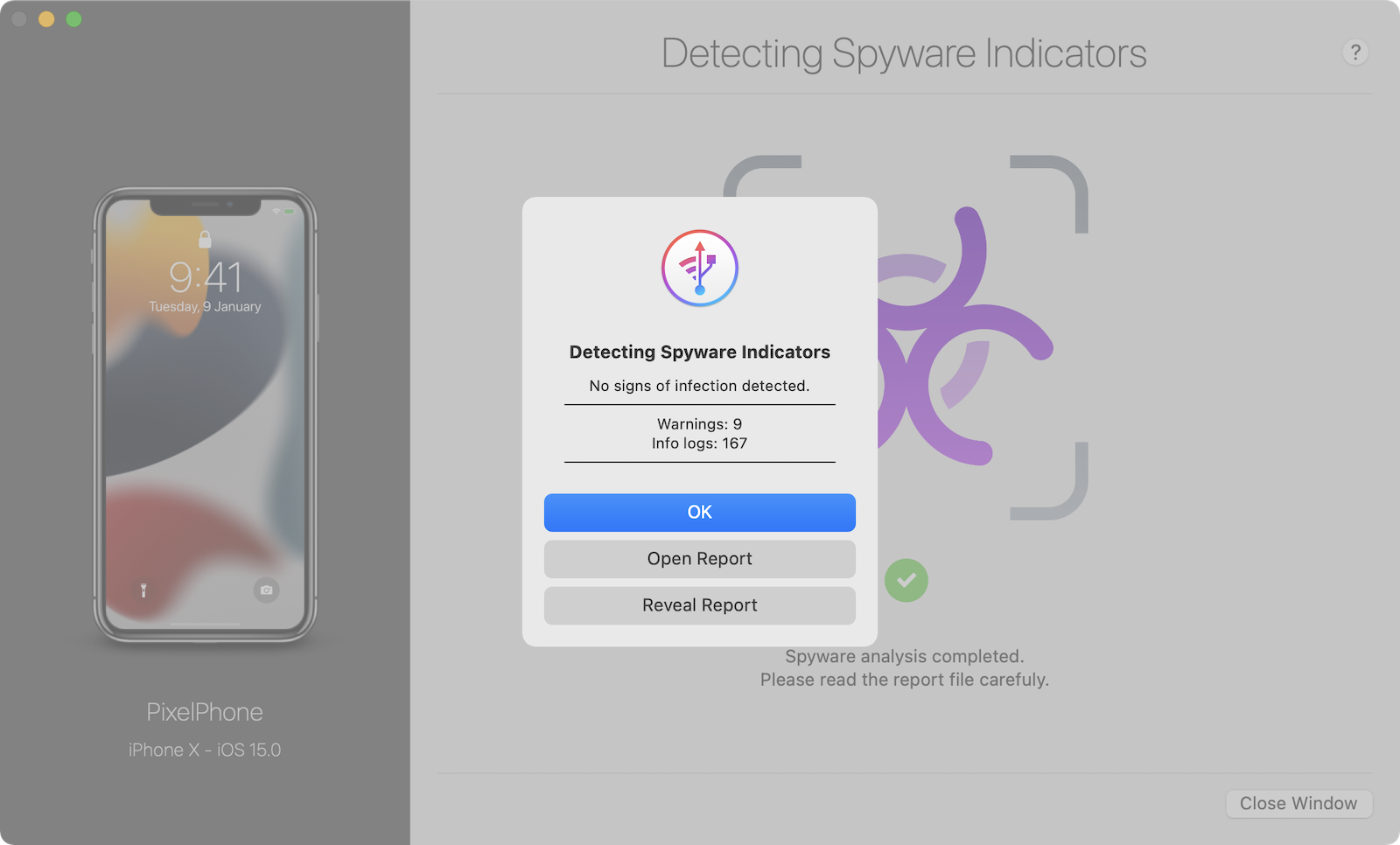Usually, it’s not easy to install spyware on smartphones and tablets, and especially on the iPhone or iPad. But Pegasus spyware is an exception. In July 2021, researchers found that Pegasus had infected the smartphones of some journalists, activists, and politicians.
What makes Pegasus so lethal is the fact that the user doesn’t need to do anything to activate it. In some cases, just receiving a message is enough to install the spyware, and once installed, it gives the hacker full access to the device and its data.
Pegasus is, of course, a targeted spyware, and Apple has likely (if unofficially) included a patch in the iOS 14.7.1 update.
But if you’re curious to know if your iPhone or iPad is running the Pegasus spyware now, there’s now an easy way to find out. iMazing, a third-party iPhone and iPad management tool, has included a spyware detection capability for free with version 2.14 of the software.
After downloading the iMazing software on your Mac or PC, connect your iPhone or iPad and unlock your device. Select your device from the iMazing app, and choose the “Detect Spyware” option.

Then, follow the instructions in the wizard by hitting the “Next” button three times to download the necessary data, and agree to the terms. Finally, click the “Start Analysis” button to begin the process.
The iMazing app will download the data, make a backup of your iPhone or iPad, and start analysing your device for spyware. This might take a while — during testing, the process took around 30 minutes to create the backup. Once the backup is complete, iMazing will ask you to enter the backup encryption password (if you’ve set one up) and get to work.
iMazing will scan the data on your iPhone or iPad, which could take 5–10 minutes. Once the analysis is complete, iMazing will show you the results in an easy-to-read manner. After our scan, for example, we got nine warnings, but the scan revealed no signs of malware or spyware infection.

If your device is infected, the first step is to not panic. It could be a false positive — run the test again just to be safe. You can also send the report to iMazing’s customer care team for further analysis.
And if you do get a positive result, and especially if you or your family members are active politically in a way that might put you at risk in your country, iMazing advises you immediately turn off your device and remove the SIM card. You can then going about rooting out the infection — whether that means restoring from an older backup (and analysing that to make sure it isn’t infected too) or wiping all of your data from the device and starting over from scratch.

Leave a Reply
You must be logged in to post a comment.